

Uh oh...
It appears that you're using a severely outdated version of Safari on Windows. Many features won't work correctly, and functionality can't be guaranteed. Please try viewing this website in Edge, Mozilla, Chrome, or another modern browser. Sorry for any inconvenience this may have caused!
Read More about this safari issue.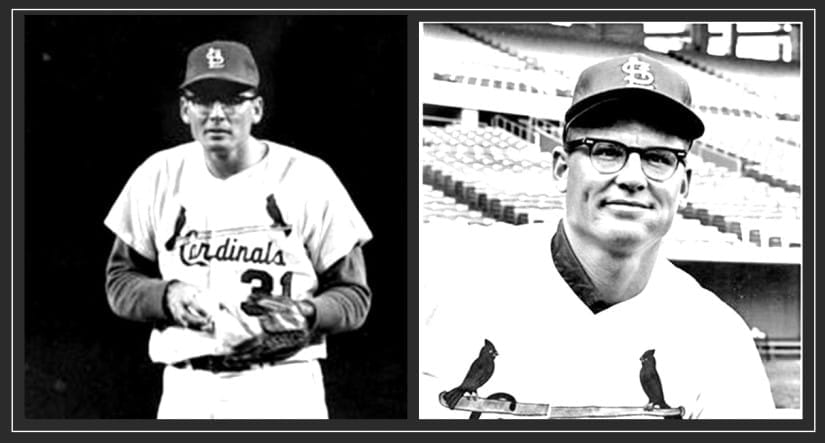

In 1967, Richard Henry Hughes of Stephens, Arkansas, took major league baseball by storm. The former Arkansas Razorback pitcher seemed to come out of nowhere to become a major contributor to the St. Louis Cardinals’ National League Pennant and World Series title.
Hughes had arrived in St. Louis as an unheralded rookie whose name had not appeared in preseason sports-page stories about the Redbirds’ pitching staff. He had been on a journey through the backroads of the Cardinals minor league system for nine years before becoming an “overnight success.”
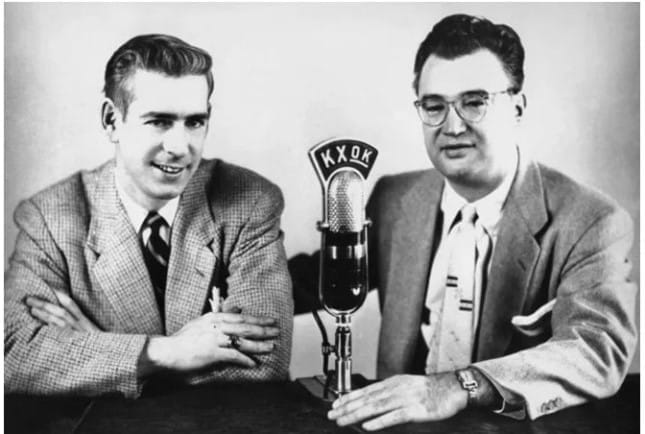
It was a time in Arkansas when fans were seldom able to watch their beloved Cardinals on television, but they “saw” Dick Hughes pitch on the radio. Harry Carey and Jack Buck described the tall, bespectacled Arkansas farm boy who leaned forward, looking for a sign as if he could not see the catcher. Harry and Jack said he was amazing—that career minor leaguer who had arrived the fall before from somewhere in the Cardinals farm system and became the best pitcher in the game.
Dick Hughes was born in Stephens, Arkansas, on February 13, 1938. His family followed his father’s job with the Tennessee Valley Authority to Shreveport, Louisiana, after World War II, where he was a standout pitcher on the Byrd High School team that won a Louisiana state baseball title in 1956.
St. Louis Cardinals’ Mid-South scout Fred Hawn recommended Hughes to Bill Ferrell, baseball coach at the University of Arkansas. Ferrell was known best as the trainer for the football team, but he also coached the baseball team. In addition to his distinguished reputation as a coach and trainer, Ferrell was credited by insiders at U of A as the man who saved Dick Hughes’ life.
Baseball at U of A in Dick Hughes’ day was vastly different from the nationally prominent program built in Fayetteville by Norm DeBriyn and Dave Van Horn. In addition to being the athletic trainer and baseball coach, Ferrell’s duties also included driving one of the automobiles used for road trips.
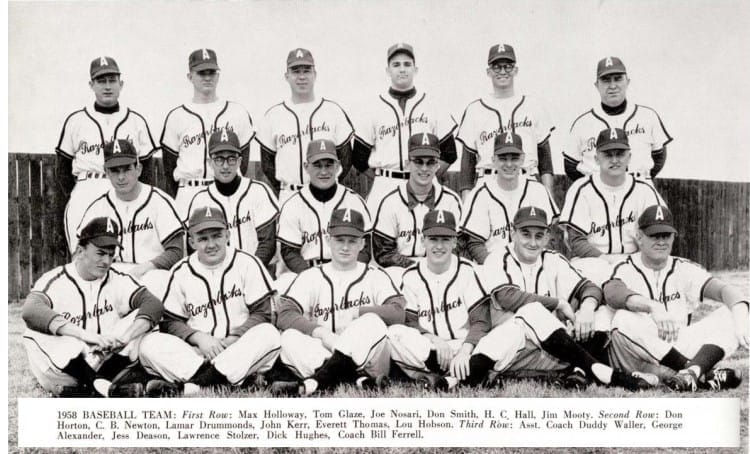
On one of those late-night road trips back from Mississippi in April 1958, the car driven by Ferrell collided with another vehicle somewhere between Little Rock and Alma. Only Ferrell’s legendary strength kept the car upright. According to Hughes, Coach Ferrell bent the steering wheel in his hands, holding the car on the road. As a result of the coach’s heroics, Hughes and the other players in the car were uninjured.
Cardinals’ scout Hawn, who had originally spotted Hughes in high school, had been keeping an eye on the young Arkansas pitcher. In 1958, the summer after his sophomore year, the scout decided Hughes was ready. Hawn arranged for the 20-year-old to attend a tryout camp in St. Louis. According to Hughes’ recollection of the tryout, “I struck out every guy I faced.” The impressed Cardinals signed the 20-year-old to his first professional contract. Over the next eight seasons, Hughes would make a circuitous journey through the various destinations in the Cardinals’ farm system but never make a trip to St. Louis.
Hughes spent his first season splitting time between Keokuk, Iowa, and the Winnipeg Goldeyes in Manitoba, Canada. He would remain in Canada for his second year and star on the Goldeyes pennant-winning team of 1959. That 1959 squad was a legendary team in Winnipeg that was honored by induction into the Manitoba Sports of Fame in 2019.
In the six seasons after his successful years in Manitoba, Hughes pitched in North Carolina, Portland, Oregon, Jacksonville, Florida, Atlanta, Georgia, and finally, a three-team coming-out party in Tulsa, Little Rock and Toledo, Ohio, in 1966.
Hughes’ work with the Redbirds minor league clubs was good, but in a farm system that included Bob Gibson, Steve Carlton, Nelson Briles and Larry Jaster, he never caught the eye of St. Louis decision-makers. It looked like he was destined to be a career minor-league pitcher until something magical happened to Hughes in 1966. In the season split between Tulsa, Toledo and Little Rock, the 28-year-old minor league vagabond pitched his way to St. Louis.
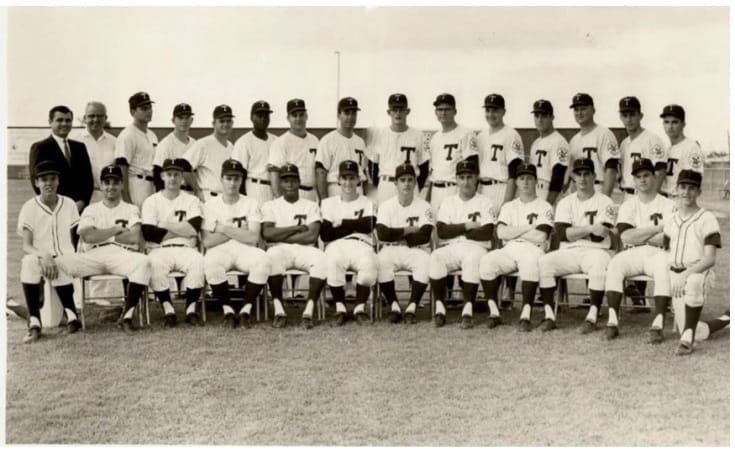
After going 12-8 with the three farm clubs, Hughes finally got his shot in St. Louis on September 11, 1966, coming out of the bullpen to earn a victory over the Pirates. After nine seasons and more than 1,200 minor league innings pitched, Dick Hughes was in the big leagues. He finished September with a complete-game shutout on September 30. In his six games with the Cards, he pitched 21 innings with a 1.71 earned run average, setting the stage for his historic rookie year in 1967.
After his success in his trial with the Cards the previous fall and a good spring training, Hughes made the 1967 Opening Day roster. He had made the team, but the Cardinals did not plan to make him a part of their regular starting rotation. With Bob Gibson, Larry Jaster, Nelson Briles, Ray Washburn, and veteran Al Jackson slated to be the starting rotation, Hughes would be used in relief.
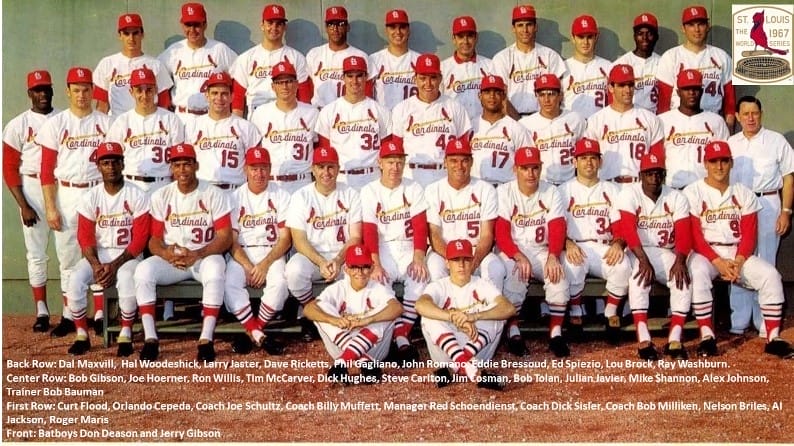
Hughes pitched five times in April, all in relief. Although saves had yet to become an official part of baseball statistics, he finished three games, and two were retroactively recorded as saves. His April ERA was 2.35. The Cards saw no reason to alter the plans to use Hughes as a reliever.
By the end of May, his record stood at 2-2. Still mostly a reliever, something remarkable happened as the season progressed into the third month. A hunch led manager Red Schoendienst to try Hughes as a starting pitcher. He won five straight in June including a complete-game three-hitter over future Hall of Famer Gaylord Perry in San Francisco. The win vaulted the Cards into first place, a position they never relinquished for the remainder of the season.
As the 1967 season moved into the summer, Hughes began to play an even more significant role. Amiable general manager, Stan Musial, called him into his office on two occasions to give the Cards’ new pitching sensation a raise. After all, the rookie was leading the team in wins, innings pitched, complete games and shutouts. Hughes had a better ERA than Steve Carlton, more strikeouts than Bob Gibson, and an 8-1 record vs the Giants, Cubs, and Phillies, clubs that were in the pennant race all summer.
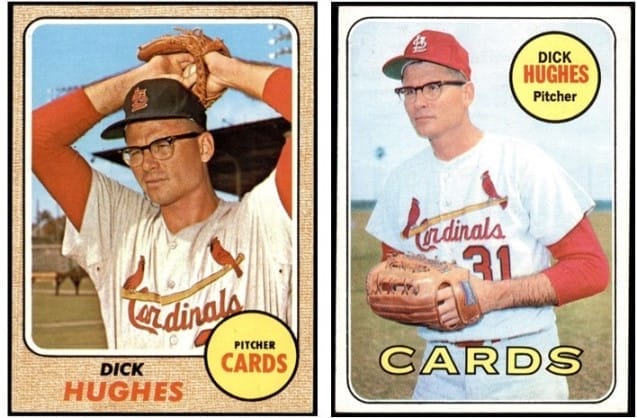
By midseason, Hughes and Nelson Briles had traded places. Briles assumed the role of “long reliever” and occasional starter while Hughes became the starting pitcher every fifth day. Hughes went 14-4 after joining the starting rotation and Briles thrived in his new role. Although the Redbirds had all but wrapped up the pennant by Labor Day, the unrelenting Cards won 10 of their last 15 games to finish 10 ½ games ahead of the second-place Giants. In a fitting conclusion to a remarkable season, Hughes and Briles were the winning pitchers in the last two victories.
The Cardinals won the World Series title over the Boston Red Sox in seven games to put a final exclamation point on a remarkable season, and Dick Hughes got a raise to $25,000. Hughes would be selected by the Sporting News as the National League Pitcher of the Year. He could now expand that cattle ranch in Stephens.

During his extended tour of the Cardinals’ minor league clubs, Hughes’ Arkansas realism necessitated a plan for life after baseball. Hughes thought he still had major-league stuff, but realistically, he must have wondered if he would ever get the chance. He had married Anne Wreyford, a graduate of Southern State University, in 1964. He and the new Mrs. Hughes saved enough from his minor league salary and some winter-league work to start a cattle operation with his father in Ouachita County.
When chronic arm problems prematurely ended his career two years after his magic season, Dick Hughes, the baseball star in St. Louis, became Richard Henry Hughes, a rancher in Stephens, Arkansas. Ann became the beloved English teacher at Stephens High School, and Dick became a deacon at the First Baptist Church in his hometown.
On Feb. 3, 2018, Dick and Anne Hughes were the guests of the Robinson-Kell Chapter of SABR in Bryant, Arkansas. After an hour and a half of baseball stories well told, the Hugheses volunteered a favorite song they had not only sung often but lived their life by. In a well-practiced performance, the couple offered their philosophy in the hymn “One Day at a Time.”
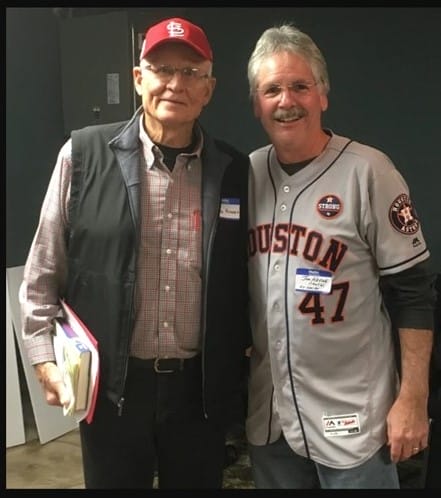
Dick Hughes with Arkansas SABR member Jim Kreuz.
We do the work.
You check your email.
Sign up for our weekly e-news.
Get stories sent straight to your inbox!









Like this story? Read more from Jim Yeager
For most of the 1964 season, the Arkansas Travelers were the best team in...
At 11:53 p.m. on June 1, a crowd of 11,000-plus at Alex Box Field fell...
Baseball Hall of Famer Bill Dickey was born in Bastrop, Louisiana, on...
Join the Conversation
Leave a Comment